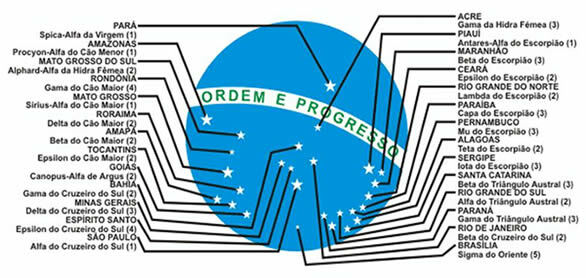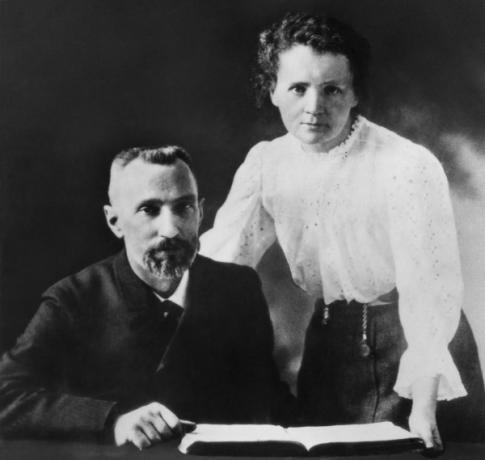The Brazilian flag was deployed on November 19, 1889, the idea of the current flag was developed by Professor Raimundo Teixeira Mendes, who It also had the participation of Dr. Miguel Lemos and Professor Manuel Pereira Reis and who made the drawing was the painter Décio Villages.
As for the stars displayed on the Brazilian flag, they are not uniform and each one has a meaning. Each star on the flag represents a Brazilian state, in addition, they all have the same configuration, all have five points. Another item that differs one star from another is in terms of size, there are five different sizes.
The distribution of stars on the Brazilian flag was based on the characteristics of the sky in Rio de Janeiro, on November 15, 1889.
The star Spica is located above the band that expresses “Ordem e Progresso” and represents the State of Pará, which in 1889 corresponded to the largest territory above the parallel of the Equator. The Federal District is represented by the Octant sigma star.

States |
Meaning |
| ACRE | Female Hydra Range |
| AMAPA | Big Dog Beta |
| AMAZON | Procyon (Alpha of the Lesser Dog) |
| FOR | Spica (Virgin Alpha) |
| MARANHÃO | Scorpio Beta |
| Piauí | Antares (Alpha of the Scorpion) |
| CEARÁ | Scorpio Epsilon |
| LARGE NORTHERN RIVER | Scorpio Lambda |
| PARAÍBA | Scorpion Cloak |
| PERNAMBUCO | Scorpio Mu |
| ALAGOAS | scorpion teat |
| SERGIPE | Scorpion Iota |
| BAHIA | Southern Cross Range |
| HOLY SPIRIT | Southern Cross Epsilon |
| RIO DE JANEIRO | Cruzeiro do Sul Beta |
| SAO PAULO | Cruzeiro do Sul Alpha |
| PARANÁ | Southern Triangle Range |
| SANTA CATARINA | Southern Triangle Beta |
| RIO GRANDE DO SUL | Southern Triangle Alpha |
| MINAS GERAIS | Southern Cross Delta |
| GOIÁS | Canopus (Alpha of Argus) |
| MATO GROSSO | Sirius (Alpha of the Greater Dog) |
| MATO GROSSO DO SUL | Alphard (Alpha of the Female Hydra) |
| RONDONIA | Largest Dog Range |
| RORAIMA | Big Dog Delta |
| TOCANTINS | Epsilon of the Greater Dog |
| BRASILIA DF) | Octant's Sigma |
Eduardo de Freitas
Graduated in Geography
Source: Brazil School - https://brasilescola.uol.com.br/brasil/significado-das-estrelas.htm



